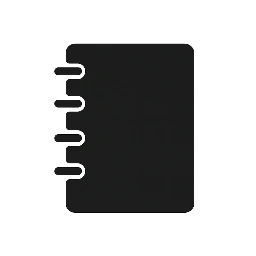The Complete Beginner’s Guide to Creating Your First Budget in 2026
Creating your first budget can feel overwhelming, especially when you’re not sure where to start. If you’ve ever found yourself wondering where all your money went at the end of the month, you’re not alone. The good news is that budgeting doesn’t have to be complicated, restrictive, or time-consuming. In this comprehensive guide, I’ll walk you through everything you need to know to create a realistic budget that actually works for your lifestyle.
What Is a Budget and Why Do You Need One?
A budget is simply a plan for your money. It’s a tool that helps you understand where your money is coming from and where it’s going. Think of it as a roadmap for your financial journey rather than a restrictive diet for your wallet.
Many people resist budgeting because they think it means giving up the things they enjoy. In reality, a good budget does the opposite. It gives you permission to spend money on things you value while helping you cut back on expenses that don’t bring you joy or move you closer to your goals.
Here’s what a solid budget can do for you:
Financial Clarity: You’ll know exactly how much money you have, where it’s going, and whether you’re living within your means. This awareness alone can be transformative.
Stress Reduction: Money stress often comes from uncertainty. When you have a budget, you eliminate the anxiety of not knowing whether you can afford something or if you’ll have enough to cover your bills.
Goal Achievement: Whether you want to save for a vacation, pay off debt, build an emergency fund, or buy a home, a budget helps you allocate money toward these goals systematically.
Prevents Overspending: A budget acts as a guardrail, helping you avoid impulse purchases and keeping your spending in check before it becomes a problem.
Builds Wealth Over Time: Even small amounts saved and invested consistently can grow significantly over the years. A budget ensures you’re consistently setting money aside.
Step 1: Calculate Your Monthly Income
Before you can plan where your money should go, you need to know how much you’re working with. This step is crucial and more nuanced than it might seem at first.
For Salaried Employees
If you receive the same paycheck every month, this is straightforward. Look at your most recent pay stub and identify your net income (also called take-home pay). This is the amount that hits your bank account after taxes, health insurance, retirement contributions, and other deductions.
Don’t use your gross income (the amount before deductions) for budgeting purposes. You can’t spend money that never reaches your account.
If you’re paid biweekly, you’ll receive 26 paychecks per year, which means two months will have three paychecks. For budgeting purposes, calculate your monthly income by multiplying your biweekly paycheck by 26 and dividing by 12. This gives you an accurate average monthly income.
For Irregular Income
If you’re self-employed, work on commission, or have income that varies from month to month, calculating your average income requires looking at a longer time period. Review your income from the past 6-12 months and calculate the average.
When you have irregular income, it’s wise to budget based on your lowest-earning month from the past year. This conservative approach ensures you’re not overspending during lean months. When you earn more than your budgeted amount, the extra money can go toward savings, debt repayment, or other financial goals.
Include All Income Sources
Don’t forget to include:
- Side hustle income
- Freelance work
- Rental income
- Child support or alimony
- Regular gifts or monetary support from family
- Investment income or dividends
- Any other regular money coming in
The key word here is “regular.” Don’t include one-time bonuses or windfalls in your monthly budget calculations. We’ll discuss how to handle irregular income later.
Step 2: Track Your Current Spending
Many people skip this step and jump straight to creating a budget based on what they think they spend. This is a mistake. You need real data about your actual spending patterns, not estimates or guesses.
How to Track Your Spending
Choose one of these methods:
Bank and Credit Card Statements: Go through your statements from the past 2-3 months and categorize every transaction. This is tedious but incredibly enlightening. Most people are shocked when they see their actual spending patterns.
Budgeting Apps: Apps like Mint, YNAB (You Need A Budget), EveryDollar, or PocketGuard can automatically categorize your transactions. Many of these connect directly to your bank accounts and credit cards.
Spreadsheet Method: Create a simple spreadsheet with columns for date, description, category, and amount. Enter every transaction manually for at least one month.
Receipt Method: Keep every receipt for a month and categorize them at the end of each week.
Categories to Track
Organize your spending into these main categories:
Housing: Rent or mortgage, property taxes, HOA fees, home insurance, maintenance and repairs
Utilities: Electricity, gas, water, trash, internet, phone
Transportation: Car payment, gas, insurance, maintenance, public transportation, ride-sharing
Food: Groceries, dining out, coffee shops, food delivery
Insurance: Health insurance, life insurance, disability insurance (not covered by employer)
Debt Payments: Credit cards, student loans, personal loans, medical debt
Personal Care: Haircuts, toiletries, cosmetics, gym membership
Entertainment: Streaming services, hobbies, movies, concerts, books
Clothing: New clothes, shoes, accessories, dry cleaning
Healthcare: Doctor visits, prescriptions, medical supplies, therapy
Savings and Investments: Emergency fund, retirement, other savings goals
Miscellaneous: Gifts, donations, pet expenses, subscriptions
What You’ll Discover
This tracking period often reveals spending leaks you didn’t know existed. Common surprises include:
- Subscription services you forgot about
- How much you actually spend on eating out or coffee
- Small daily purchases that add up significantly
- Impulse purchases that don’t align with your values
Step 3: Separate Needs from Wants
Now comes the moment of truth. You need to look at your spending categories and honestly assess which expenses are needs (essential) and which are wants (discretionary).
Needs (Fixed and Variable)
Needs are expenses required for basic living and functioning in society:
- Housing costs
- Utilities
- Basic groceries
- Transportation to work
- Insurance
- Minimum debt payments
- Basic clothing
- Essential healthcare
Wants
Wants are things that improve your quality of life but aren’t strictly necessary:
- Dining out
- Entertainment and streaming services
- Gym memberships
- Latest phone or technology
- New clothes beyond basics
- Premium cable or streaming packages
- Expensive car when a modest one would suffice
The line between needs and wants can sometimes blur. For example, a phone is a need in today’s world, but the latest smartphone is a want. Transportation is a need, but a luxury car is a want.
Be honest with yourself during this exercise. Many people categorize wants as needs to avoid making difficult choices. Remember, labeling something as a want doesn’t mean you can’t have it. It simply means it should be funded after your essential expenses and financial goals are covered.
Step 4: Set Financial Goals
A budget without goals is just an accounting exercise. Your financial goals give your budget purpose and motivation. They’re the reason you’re willing to make trade-offs and be intentional with your spending.
Short-Term Goals (Within 1 Year)
These are goals you want to accomplish in the next few months to a year:
- Build a starter emergency fund of $1,000
- Pay off a specific credit card
- Save for a vacation
- Buy a new appliance
- Build a holiday gift fund
Medium-Term Goals (1-5 Years)
These goals require more time and consistent effort:
- Save a full emergency fund (3-6 months of expenses)
- Pay off all consumer debt
- Save for a down payment on a house
- Save for a car purchase
- Build a wedding fund
Long-Term Goals (5+ Years)
These are your big-picture financial aspirations:
- Retirement savings
- Children’s education fund
- Pay off your mortgage early
- Achieve financial independence
- Start a business
Write down your goals and assign dollar amounts and deadlines to each one. Be specific. Instead of “save more money,” write “save $5,000 for an emergency fund by December 2026.”
Prioritize your goals. You likely can’t fund all of them simultaneously, especially when you’re just starting out. Most financial experts recommend building a starter emergency fund first, then focusing on high-interest debt, then building a full emergency fund, and finally working on other goals.
Step 5: Choose Your Budgeting Method
There’s no one-size-fits-all approach to budgeting. The best method is the one you’ll actually stick with. Here are the most popular budgeting frameworks:
The 50/30/20 Budget
This simple framework divides your after-tax income into three categories:
- 50% for needs (housing, utilities, groceries, transportation, insurance, minimum debt payments)
- 30% for wants (entertainment, dining out, hobbies, subscriptions)
- 20% for savings and debt repayment beyond minimums
This method is great for beginners because it’s simple and flexible. However, it may need adjustment based on your location and income level. In high cost-of-living areas, needs might consume more than 50% of your income.
Zero-Based Budget
With this method, you assign every dollar of your income a specific job until you reach zero. Income minus all expenses, savings, and debt payments equals zero.
This doesn’t mean you spend everything. It means every dollar has a purpose, including the dollars you’re saving. This method gives you the most control and awareness but requires more detailed tracking.
Envelope System
This cash-based method involves withdrawing your budgeted amounts for various categories and placing the cash in labeled envelopes. When an envelope is empty, you can’t spend any more in that category until the next month.
While using physical cash has become less common in our digital world, this method can be adapted using separate bank accounts or budgeting apps that create virtual envelopes.
Pay Yourself First
This approach prioritizes savings by automatically transferring money to savings and investment accounts as soon as you get paid. You then budget with whatever remains.
This method ensures your financial goals are funded first, but you need to be careful that your remaining income adequately covers your needs.
Step 6: Create Your Budget
Now you’re ready to build your actual budget. Whether you use a spreadsheet, budgeting app, or pen and paper, follow these steps:
List Your Income
Start with your total monthly take-home pay calculated in Step 1. If you have irregular income, use the conservative estimate we discussed.
List Your Fixed Expenses
These are expenses that stay the same each month:
- Rent or mortgage
- Car payment
- Insurance premiums
- Loan payments
- Subscriptions and memberships
List Your Variable Expenses
These expenses fluctuate from month to month:
- Groceries
- Utilities
- Gas
- Dining out
- Entertainment
- Clothing
- Personal care
For variable expenses, use the average from your tracking period in Step 2. It’s better to overestimate expenses and underestimate income.
Allocate Money to Financial Goals
Based on your prioritized goals from Step 4, assign specific dollar amounts:
- Emergency fund contribution
- Extra debt payments
- Retirement contributions
- Other savings goals
Do the Math
Add up all your expenses, debt payments, and savings contributions. Subtract this total from your income.
If you have money left over: Great! Decide whether to allocate it to additional savings, increase your fun money, or add it to debt payoff.
If you’re short: You need to make adjustments. Look for expenses to reduce or eliminate, particularly in the wants category. If you’ve cut wants to the bone and you’re still short, you may need to address your needs (finding a roommate, moving to a less expensive place, or finding ways to increase your income).
Step 7: Implement and Track Your Budget
Creating a budget is only half the battle. The real work begins when you start living by your budget.
Set Up Your System
Choose your tracking method:
- Budgeting app that syncs with your accounts
- Spreadsheet that you update weekly
- Paper budget tracker
- Hybrid approach combining multiple methods
Schedule Weekly Money Dates
Set aside 15-30 minutes each week to review your spending, update your budget, and ensure you’re on track. Many people find Sunday evenings ideal for this check-in.
During your money date:
- Review all transactions from the past week
- Categorize any uncategorized expenses
- Check how much is left in each budget category
- Adjust spending plans for the upcoming week if needed
- Celebrate wins and progress
Use Tools to Stay on Track
Make budgeting easier with these strategies:
Automate Everything Possible: Set up automatic transfers to savings accounts and automatic bill payments. This removes the temptation to skip savings and ensures bills are paid on time.
Use the Right Payment Methods: Use cash or debit cards for categories where you tend to overspend. The psychological impact of physically handing over money or seeing your account balance decrease immediately can help curb impulse purchases.
Check Before You Spend: Before making a non-essential purchase, check your budget to see if you have money allocated for that category. This five-second pause can prevent budget-busting purchases.
Track Daily If Needed: If you’re struggling to stay within budget, track your spending daily instead of weekly. This increased awareness can help you course-correct before small overspending turns into a big problem.
Step 8: Adjust and Refine
Your first budget will not be perfect, and that’s completely normal. Budgeting is a skill that improves with practice.
Expect a Learning Curve
Give yourself at least three months to get your budget working smoothly. The first month, you’ll likely forget categories or underestimate certain expenses. The second month, you’ll make adjustments based on what you learned. By the third month, your budget should feel more accurate and manageable.
When to Adjust Your Budget
Life changes, and your budget should change with it. Revisit and adjust your budget when:
- Your income changes
- You have a major life event (marriage, baby, divorce, job loss)
- You move or your housing costs change
- You pay off a debt
- You complete a savings goal
- A category consistently runs over or under budget
- Seasons change (utility costs often vary significantly)
Common Budgeting Challenges and Solutions
Challenge: Irregular expenses derail your budget Solution: Create a “sinking fund” where you save monthly for irregular expenses like car maintenance, medical copays, or holiday gifts. Add up your estimated annual irregular expenses, divide by 12, and save that amount each month.
Challenge: You keep going over budget on groceries or entertainment Solution: Your budget may be unrealistic. Gradually reduce the allocation over several months rather than making a drastic cut all at once. Also, track when and why you overspend to identify patterns.
Challenge: Unexpected expenses blow up your budget Solution: This is why an emergency fund is crucial. Until you have one, include a “buffer” category in your budget for small unexpected expenses.
Challenge: Your partner isn’t on board with budgeting Solution: Have an honest conversation about shared goals and how budgeting can help you achieve them together. Consider a “yours, mine, and ours” approach where you each get personal spending money with no questions asked.
Advanced Budgeting Tips
Once you’ve mastered the basics, these strategies can take your budget to the next level:
Annual Budget Review
Once a year, look at the big picture. Calculate your net worth, review your financial goals, and assess your overall financial health. This is also a good time to review insurance coverage, retirement contributions, and long-term plans.
Seasonal Budgeting
Some months are more expensive than others. December often includes holiday spending, summer might include vacation costs, and September might have back-to-school expenses. Plan for these seasonal variations by reducing spending in other months or saving specifically for these expensive periods.
Lifestyle Inflation Awareness
As your income increases, resist the urge to increase your spending proportionally. Instead, direct raises and bonuses toward financial goals. This concept, called avoiding lifestyle inflation, is one of the most powerful wealth-building strategies.
The 24-Hour Rule
For unplanned purchases over a certain amount (say $50), implement a 24-hour waiting period. This pause helps you distinguish between impulse purchases and things you genuinely want or need.
Final Thoughts
Creating your first budget is an act of self-care and self-respect. It’s you taking control of your financial future and making intentional choices about how you use your resources.
Remember that budgeting is not about perfection. You will have months where you go over budget. You will make financial mistakes. What matters is that you learn from these experiences, adjust your approach, and keep moving forward.
The goal isn’t to create the perfect budget on your first try. The goal is to create awareness, build better financial habits, and align your spending with your values and goals. With consistency and patience, budgeting will become second nature, and you’ll wonder how you ever managed your money without this essential tool.
Start today. Even if your budget isn’t perfect, even if you don’t have all the answers, begin with what you know. Track your spending for a week, list your income and expenses, and take that crucial first step. Your future self will thank you for the financial clarity and security you’re building today.



